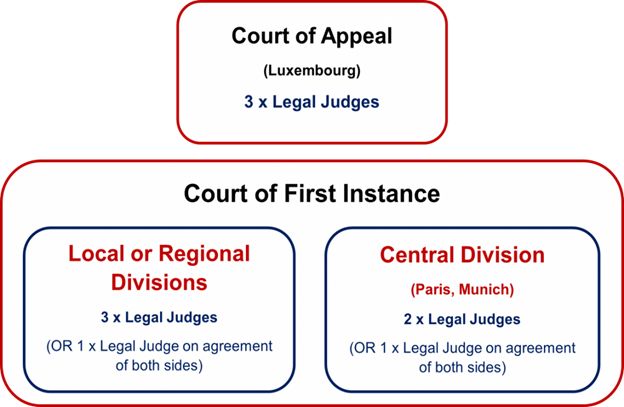The European patent system is shortly to undergo its biggest change in 40 years, with the launch of the Unitary Patent Package (UPP). This month Austria took the steps necessary to start final preparations in setting up a court for the enforcement of Unitary Patents across contracting states. Here we summarise the new system and the practical implications for businesses.
The system consists of two parts:
(i) the new European Patent with Unitary Effect ("EPUE" or "unitary patent") covering most of the EU;
(ii) the new Unified Patent Court (UPC) which will have jurisdiction for litigating unitary patents and some European patents (unless these have been "opted out"), as well as Supplementary Protection Certificates (SPCs).
So what are the most important points that businesses need to be aware of as we count down to the launch of the new system?
Geographical Coverage:
The UPP is likely to cover a significant proportion of the EU, probably 24 countries eventually, with a total population roughly equal to that of the USA – so the new system will be relevant to every company doing business in the EU.
The UPP is expected to cover 17 countries initially. These are Germany, France, the Netherlands, Italy, Austria, Belgium, Bulgaria, Denmark, Estonia, Finland, Latvia, Lithuania, Luxembourg, Malta, Portugal, Slovenia and Sweden.
Cyprus, the Czech Republic, Greece, Hungary, Ireland, Romania and Slovakia are expected to join later. Croatia may also join.
Following Brexit, the United Kingdom is no longer part of the UPP. Spain and Poland are also not expected to take part, although they are EU countries.
Entry into Force:
Deposit of ratification by Germany is all that is needed before the UPP can enter into force. This is being delayed briefly to allow time for the court to be set up, but is expected to take place in mid-2022. The UPC is likely to enter into force in late 2022 or early 2023.
The Unitary Patent:
This will be a single, indivisible patent right covering a number of European countries. Any European patent applications which grant after the UPP goes live can benefit from unitary effect, provided they were not filed before March 2007.
Unitary patent protection will be cheaper for patentees who routinely validate their European patents in more than four or five countries.
Obtaining unitary effect will be simple – request this at the European Patent Office (EPO) within one month of grant, and file a translation of the patent into English if the application was prosecuted in French or German, or into any EU language if the patent was prosecuted in English. Once the request for unitary effect has been recorded, the patent will automatically take effect in the countries in which the UPP is in force.
The geographical coverage provided by a unitary patent will remain fixed, covering only those states which had ratified the UPC Agreement at the time of grant. It will not be possible to have a unitary patent and also use the existing national validation procedures to obtain "classical" European patents in respect of countries which are part of the UPP at the time of grant. However, it will be possible to combine a unitary patent with classical European patents in respect of countries which are not part of the UPP at the time of grant. It will also be possible to validate a European patent via the "classical" validation procedure in UPP states, provided that a unitary patent is not also requested.
The Unified Patent Court:
The UPC will initially be an alternative forum to national European courts for patent litigation, and will eventually become a replacement forum. At least for a transition period of seven years, it will be possible to opt out of the UPC for classical European patents, so that they will remain under the jurisdiction of the national courts. If a classical European patent is not opted out, then eventually the UPC will have exclusive jurisdiction. However, during the transition period, this jurisdiction will be shared with the national courts.
Unitary patents must be enforced/challenged through the UPC.
Central enforcement via the UPC provides the benefit of being able to enforce a patent across a substantial part of the EU in a single action in a single court, relatively quickly (12-15 months). A single declaration of non-infringement will also be available. On the other hand, central revocation provides the risk of a patent being lost in a single action.
The UPC will be structured as follows:

The Central Division will be based in Paris with a sub-division in Munich and a further sub-division expected (to replace the sub-divisional originally allocated to London). Cases will be allocated between these according to their subject-matter. The Munich sub-division will deal with cases relating to mechanical engineering. The further sub-division will hear cases related to chemistry, metallurgy and pharmaceutical and human necessities. All other subject-matter will go to Paris, i.e. cases relating to performing operations, transporting, textiles, paper, fixed constructions, physics and electricity.
Planning your opt-out strategy:
You will need to consider the risks and benefits of opting your existing European patents and applications out of the UPC, bearing in mind that the ideal time to take this step would be during the "sunrise period" before the UPC opens for business.
The "sunrise period" will start three months before entry into force of the UPP to allow for patents to be opted out prior to the opening of the UPC. Thus, the sunrise period is likely to start later this year. There is no official fee for opting out.
There are various factors to consider when deciding whether to opt out, some of which are generally applicable, and some of which will vary from patent to patent.
General factors favouring an opt-out include:
- The uncertainty of litigating in a new system and the issue of dual jurisdiction in the transition period (at least seven years)
Opt-out is likely to be desirable if the wish to avoid a central revocation action against the patent is more important than the wish to bring a central infringement action against third parties.
Additional factors which may favour an opt-out for a particular patent include:
- A high likelihood of a central revocation action, for example where a patent has already been opposed before the EPO or been the subject of third party observations on patentability
- A need to avoid the consequences of a successful central revocation action, for example because the patent is of high economic value (for example, in royalties for a licensed patent)
- A high likelihood that a central revocation action would be successful, because of known validity issues.
Factors which may favour not opting out a particular patent include:
- A wish to enforce the patent in the short term simultaneously in a number of European countries
- Concern about the possibility of the patent being locked out of future enforcement via the UPC by a third party bringing an action before a national court
- The patent no longer being of interest, such that it would not be defended in a revocation action.
What other steps do I need to take to prepare?
- For your existing European patent applications which grant after the system starts, you will need to choose whether to validate these in the desired countries using the existing "classical" system, or whether to request unitary effect to cover the countries which are part of the Unitary Patents Package – a combination of these approaches may also be used in order to cover all the desired countries.
- You will need to take the UPC and unitary patent option into consideration when you draft any new licence or joint venture, or any other technology-sharing arrangements, and to review existing agreements.
- You will need to take into account new budgetary implications, litigation risks and opportunities when deciding upon future patent filing and enforcement or defence strategies.
When should I prepare?
Now! With the UPC potentially opening in late 2022 and the sunrise period in mid-2022, businesses need to start preparing and re-evaluating their European patenting and litigation strategies, and review their patent portfolio with regard to opting out.
Originally published January 2022
The content of this article is intended to provide a general guide to the subject matter. Specialist advice should be sought about your specific circumstances.


